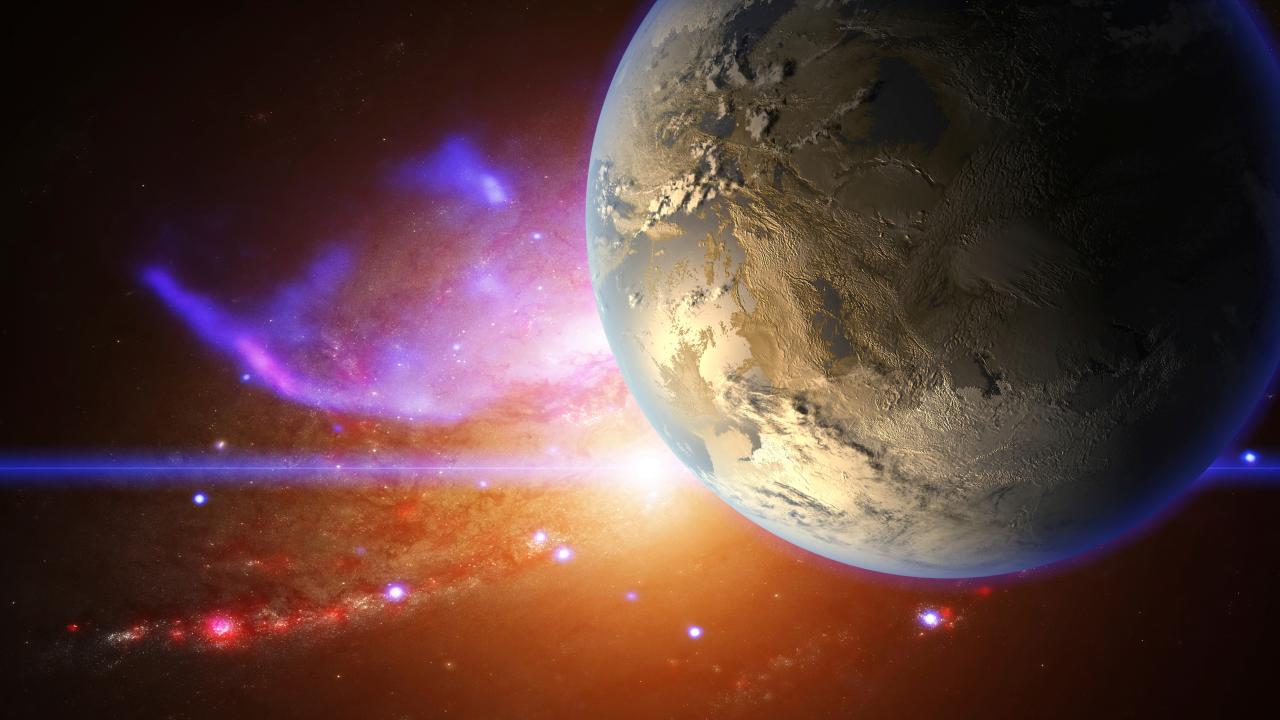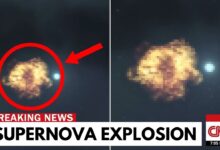Has the James Webb Telescope Just Released the First Real Image from Another World?

A major discovery in the search for extraterrestrial life, with a focus on the discovery of dimethyl sulfide (DMS) on the extrasolar planet K218b, 120 light years from Earth. The presence of DMS has attracted attention because it is a sulfur compound that on Earth, only living organisms can produce. This has led scientists to wonder whether there is life on this planet. However, the story is not simple and needs to be carefully considered from many angles.
Learn about Dimethyl Sulfide (DMS)

– **DMS** is a sulfur compound, mainly produced by living organisms, especially microscopic algae (phytoplankton) in the oceans. They produce DMS when they decompose and release this compound into the air. DMS has a characteristic odor that we can recognize when near the sea or the beach. However, most people are not really aware of this compound, although they may have encountered it without realizing it.
– The fact that DMS is only produced by living organisms makes it an important biosignature when searching for alien life. So when the James Webb Space Telescope (JWST) detected DMS on K218b, many scientists were optimistic that it was a sign of alien life.
Discovery on K218b and the controversy

– In September 2023, astronomers at the University of Cambridge announced the discovery of DMS on the planet K218b, which is believed to be a “Water World” planet with the ability to maintain liquid water on its surface, a key condition for life as we know it.
– The planet is located in the “habitable zone” of its host star K218, where the temperature is warm enough for water to exist in liquid form, similar to Earth. Although K218b is cooler than the Sun, it receives about the same amount of radiation from its host star as Earth.
– However, the detection of DMS is not definitive evidence for life. DMS was detected only in a specific infrared wavelength range, which overlaps with the wavelength range of methane – a compound also found on the planet. This adds complexity to distinguishing between DMS and methane, as JWST’s current instruments are not precise enough to clearly distinguish between them.
Difficulties in confirming life

– Scientists also note that DMS was detected in a rather weak signal in the collected data, which only became apparent when researchers used special analysis methods. This has led many to question the accuracy of the detection.
– While the Cambridge scientists are excited, they are also cautious in acknowledging that more time and further research is needed to determine whether DMS is indeed a sign of life.
– They also point out that, while JWST is very powerful, its technology is still limited and it is not yet possible to be absolutely certain that the DMS signal is not an interference from other factors such as methane or other compounds in the planet’s atmosphere.
### Theoretical Model Analysis and the Possibility of DMS Detection
– Another team of researchers from the University of California, Riverside, conducted a theoretical study to simulate the possibility of DMS on K218b. These models simulated the planet’s ocean and atmosphere to test whether DMS could accumulate in sufficient quantities for us to detect.
– The results of the study indicate that, in theory, if the planet had living organisms, they would have to produce DMS at a much higher rate than Earth for enough DMS to accumulate in the atmosphere to be detectable. Specifically, the researchers suggest that the DMS production of aliens on K218b would need to exceed 20 times that of DMS on Earth to be easily detected. This is because most of the DMS would be immediately destroyed by ultraviolet light from the host star.
– However, the study also suggests that if DMS on K218b reaches sufficient levels, its breakdown compounds such as methane and ethanol could form a natural protective layer in the planet’s atmosphere, helping to protect the DMS from destruction.
The Importance of DMS Detection
– If the detection of DMS on K218b is confirmed with certainty, it would be a major milestone in the history of science and space exploration. It would be the first direct evidence of extraterrestrial life, a question that humanity has sought to answer for thousands of years.
– While it is not yet certain that K218b is home to life, it is the most promising candidate in the search for extraterrestrial life. Scientists believe that the detection of DMS is an important step forward, and if it is proven that DMS can exist in sufficient quantities on the planet, it will open the door to the discovery of extraterrestrial life.
Scientists are currently continuing to analyze the data to clarify this issue, and new results are likely to be published in the coming months. However, any discovery of the existence of DMS would not only change the way we understand life in the universe, but could also usher in a new era in space and extraterrestrial biology research.
Overall, despite the positive signs, the discovery of DMS on K218b needs to be verified and studied further to determine whether it is an indisputable sign of alien life.








